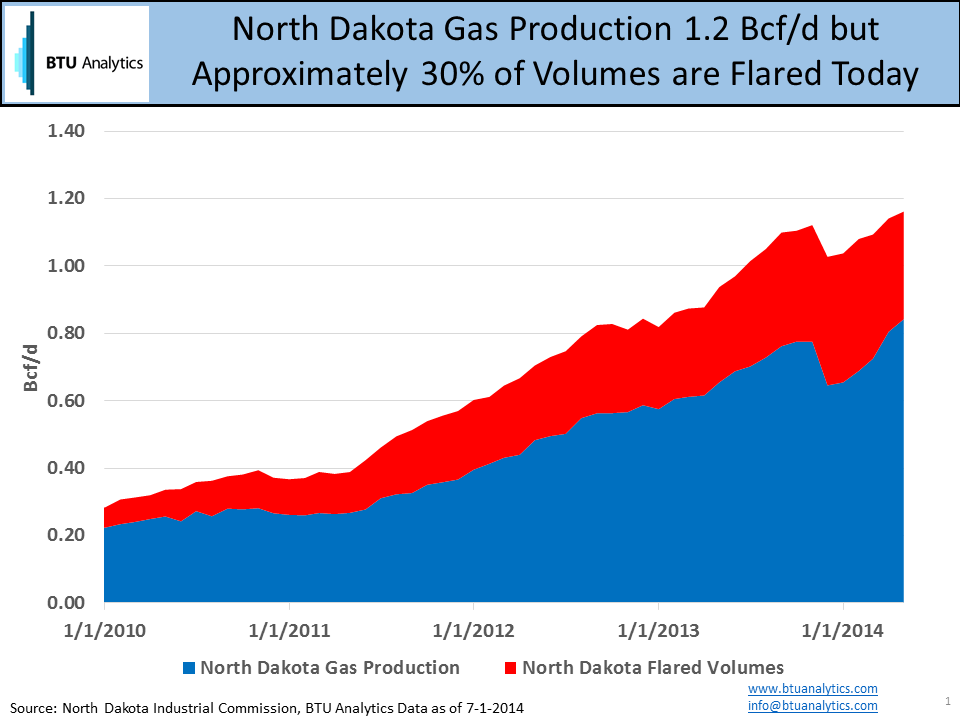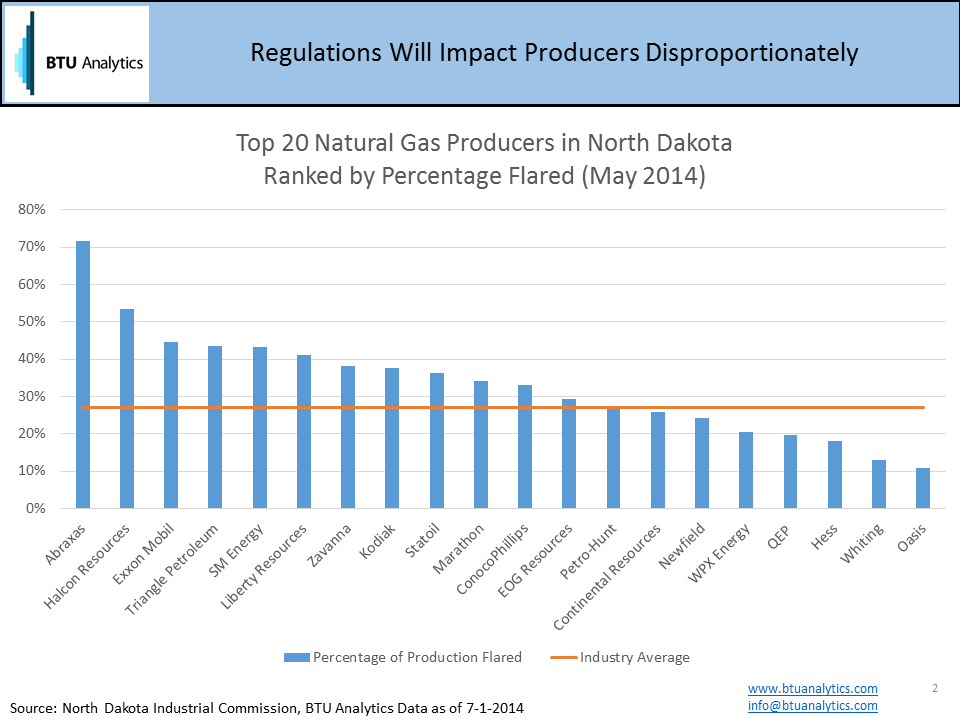The rapid rise in horizontal drilling since 2005 combined with a lack of existing oil & gas infrastructure led to the flaring of 300-400 MMcf/d of rich natural gas from the Bakken and Three Forks in the Williston Basin during 2013 and 2014.

However, over the last several month’s regulators in North Dakota have taken a tougher stance on natural gas flaring. The North Dakota Industrial Commission, the regulatory body for oil and gas in North Dakota, will require that all new well permits submit a plan for gathering and processing natural gas production. In addition, starting on September 30, 2014, producers will be required to abide by production allowances that limit flaring at new and existing wells. The new regulations are aimed at reducing flared volumes to 23% of production in January 2015 and reducing flared volumes to just 10% of total production by 2020. (Source WSJ). Operators and midstream companies have been investing in new gathering and processing capacity at a frantic pace for the last several years, and the new regulations are likely accelerate that investment pace.
The chart below shows the percentage of gas flared for the top 20 producers of natural gas in North Dakota.

BTU Analytics estimates that natural gas production in North Dakota will increase ~1.5 Bcf/d from 2013 to 2020. That will require an equal amount of new natural gas processing capacity to come online over that time frame for the state to meet its goals of recovering 90% of produced natural gas. Data compiled by BTU Analytics indicates that between 2013 and the end of 2015, over 0.6 Bcf/d of new natural gas processing will be developed, leaving room for the development of almost 1 Bcf/d of additional processing infrastructure from 2015-2020. If new plants and gathering lines are not deployed quickly enough, will producer slow down production growth or shut-in?









